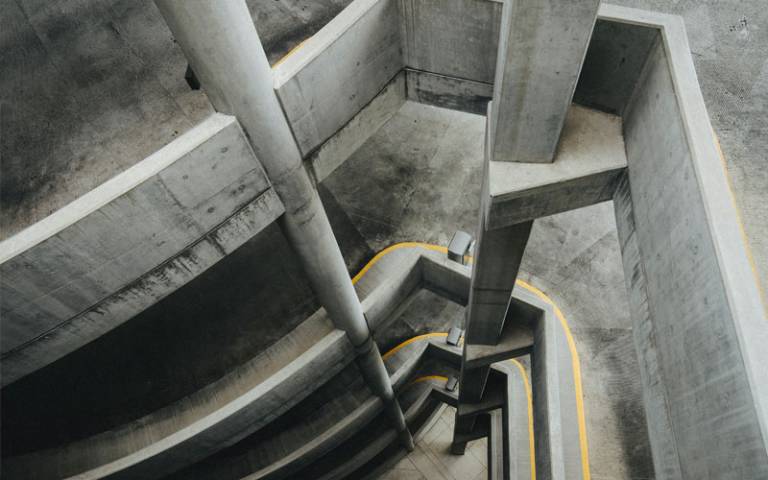This focus area aims to engineer concretes based on sustainable resources with excellent long-term durability and potential for circularity.

Description
PDR2D Dr Bruno Fernandes is working with Professors Leon Black and Susan Bernal Lopez at the University of Leeds. The project investigates how the longterm durability of concrete made with both recycled concrete aggregates (RCA) and low-carbon ternary cement with limestone additions affects its circularity and sustainability.
There are many different circular economy strategies to be considered for concrete, from reducing the use of material to increasing recyclability, plus others. However, a key strategy is increasing material in-use lifetimes through long-lasting design, including material durability. Improving concrete durability may lead over time to a decrease in demand for concrete, lower raw materials consumption, diminished waste production, and reduction of some environmental impacts, without compromising performance.
This longterm durability is usually achieved by considering the relevant aggressive environments and degradation mechanisms during design and material selection. However, this is challenging for novel concretes using sustainable and recycled resources, such as recycled aggregates and low-carbon cement.
Though these materials could enhance sustainability and circularity, their effects on durability remain uncertain due to limited long-term experimental data. In addition, most standards do not take into account the use of these materials.
With this in mind, this project was divided into two parts:
The first was to understand the degradation mechanisms of low-carbon concrete containing sustainable resources. This was done by understanding the microstructure of ternary cement concrete made with recycled concrete aggregates, with a particular focus on the interfacial transition zone (ITZ), which significantly impacts concrete durability
The second part was to propose a methodology integrating durability experiments, service-life predictions, and environmental impact (circularity and sustainability).
Experimental values were used to estimate the expected life service for structures using concrete with recycled aggregates and supplementary cementitious materials (SCMs). Based on the durability and the mix composition, circularity was measured using a Material Circularity Indicator (MCI), while carbon footprint was used as an indicator of environmental impact.
 Close
Close

